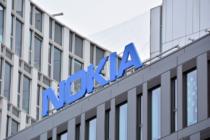
Nokia has joined in the “right to repair” trend through its newest smartphone, Nokia G22, which you can fix on your own.
The Nokia G22 is a creation of the Finnish company HMD Global. While it’s a typical smartphone with a 6.5-inch screen and a 50-megapixel camera, G22’s exterior and interior distinguish it from the rest. The phone’s recyclable plastic back is readily removable to allow for the replacement of damaged parts.
You can change various parts of the Nokia G22, including the back cover, battery, screen, and charging port using tools and repair manuals from the hardware advocacy group iFixit.
Why Nokia has joined the “right to repair” trend
According to Adam Ferguson, head of product marketing at HMD Global, this method would cost about 30% less on average than buying a new phone to replace an old one.
In response to the regulatory pressure to make electronic gadgets more environmentally friendly, smartphone manufacturers are increasingly focusing on making their devices more durable.
Because of how firmly the battery and other components are glued together, phone repairs, in particular, have become more challenging.
Legislators in the European Parliament are pushing for legislation to compel manufacturers to grant consumers the “right to repair.”
The term “right to repair” describes an effort by proponents of consumer rights to make it simpler for people to fix their technology.
By 2050, the European Commission’s Green New Deal hopes to transform the continent into a “circular economy,” in which practically all tangible products may be recycled, repaired, reused, or repurposed to reduce waste.
Apple has already embraced the “right to repair” trend
In November 2021, Apple started a self-service repair program to enable its customers to purchase parts to service their own devices after a long period of reluctance to change its repair policy.
The iPhone manufacturer has already extended this scheme to eight other European nations in December.
The capacity to repair smartphones quickly and economically will become a significant difference in the market, according to Ben Wood, the chief analyst at CCS Insight. “Consumers are demanding more sustainable and longer-lasting gadgets.
According to Wood, who cited research by CSS Insight, almost half of the mobile phone owners in Europe would get their phone fixed if it broke after its warranty had expired.
But Nokia G22 has a drawback
The Nokia G22 has one flaw in that it barely fulfills the IP52 standard for defense against harmful chemicals, making it susceptible to water damage.
Ferguson claimed that given the phone’s pricing, it was impossible to provide this feature.
Starting at $179.19, the G22 will be available in the U.K. on March 8. Replacement parts are available for purchase separately from iFixit. It will cost $27.46 for the battery, $53.75 for the display, and $22.69 for the charging port.
According to Ferguson, users would typically spend 30% less fixing their damaged parts than purchasing a new phone.
Other brands joining producing sustainable smartphones
It’s not only Nokia that is creating environmentally friendly cell phones. The Dutch company Fairphone produces a variety of phones with removable and repairable parts.
Nokia, once a dominant force in the mobile market, has subsequently fallen behind as Samsung and Apple. Nowadays, the company is most recognized for the telecom infrastructure it sold to carriers.
In 2014, Nokia sold Microsoft its mobile division for 7 billion dollars. Later on, HMD, a company founded in Finland by former Nokia executives, purchased the unit for $350 million. On each phone HMD sells, Nokia receives a royalty payment.
HMD is working on getting more of its phone production from Europe. The company claims that it’s building technologies and systems to bring 5G Nokia production to Europe in 2023.
The action highlights a trend in which major tech corporations are relocating their supply networks out of Asian nations.









